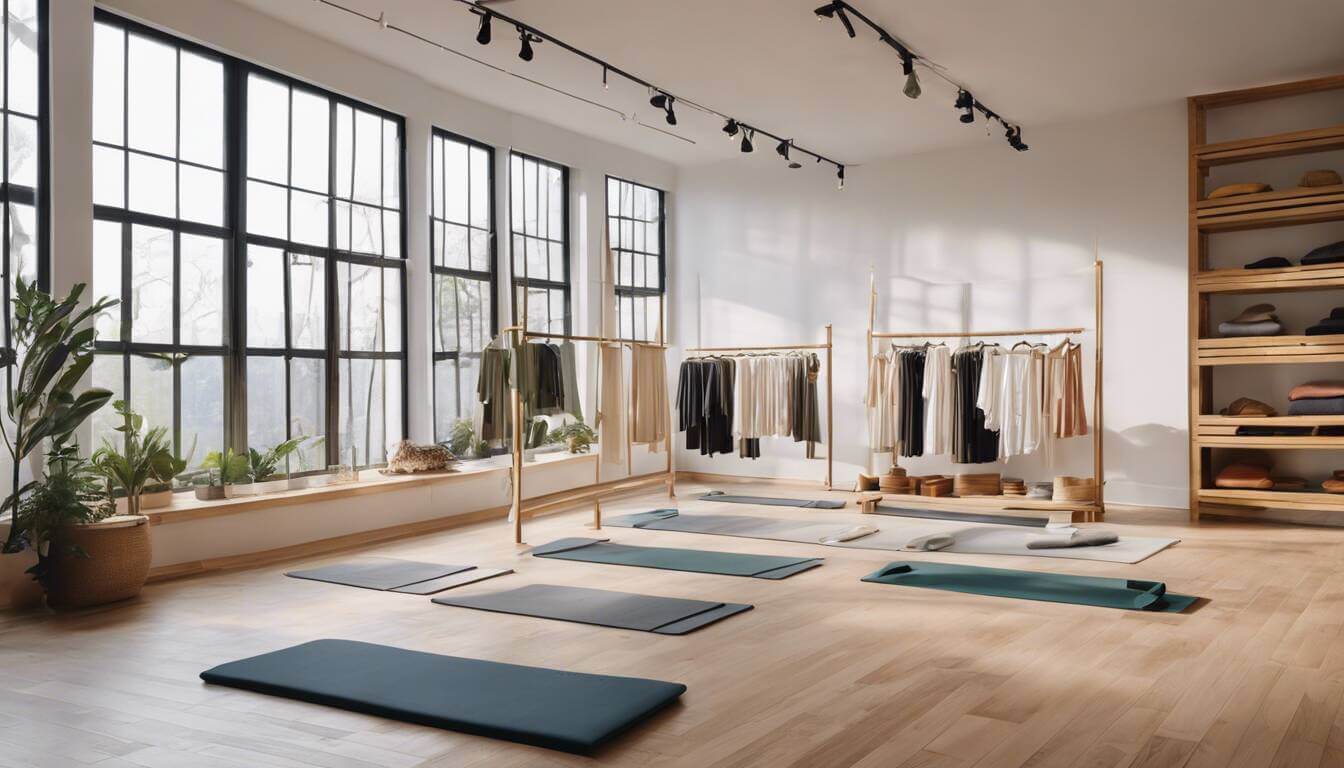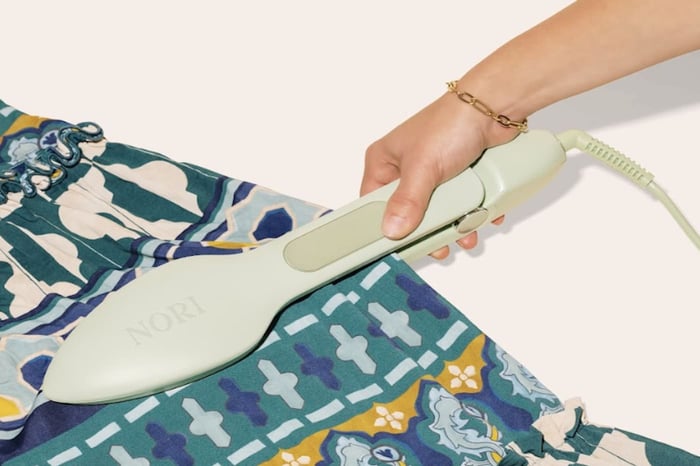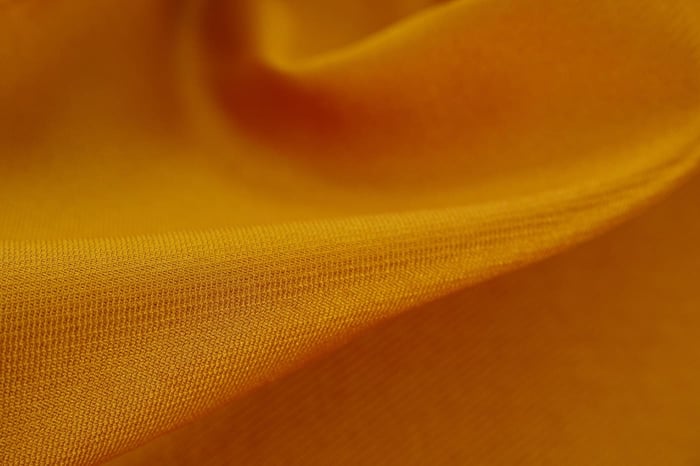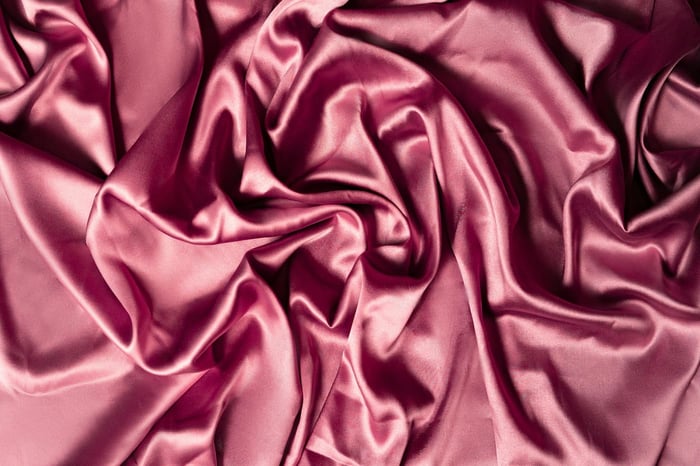
Switching over to activewear sustainable clothing significantly lessens your environmental impact by supporting ethical fashion practices and using eco conscious materials. Each garment, crafted from eco-friendly materials like recycled polyester or organic cotton, embodies a responsible approach to fashion with the bonus of a reduced carbon footprint. An added charm you might not expect is their exceptional comfort and performance enhancement abilities during workouts.
To transition smoothly into this lifestyle change, give extra thought to the brands you invest in and the care instructions for these pieces, such as using the Nori Press to make it always look brand new. You’re about to enter a workout-wardrobe revolution.
In this guide, we will provide you with sustainable workout clothing options from reputable brands such as Patagonia, Pact, Girlfriend Collective, and Allbirds. These brands use eco-friendly materials and ethical production methods, making them excellent choices for environmentally conscious consumers.
 Use discount code "SHOP10" at checkout to save 10% on The Nori Press!
Use discount code "SHOP10" at checkout to save 10% on The Nori Press!
Sustainable Workout Clothes: Why You Should Switch
In the era of fast fashion, workout clothes are no exception to the vast environmental impact caused by the fashion industry. The production of traditional activewear involves the use of synthetic materials, chemical dyes, and high water consumption, contributing to pollution, resource depletion, and greenhouse gas emissions.
These garments often have a short lifespan due to their synthetic composition. When they wear out or go out of style, they end up in landfills, further adding to the negative environmental impact. On the other hand, sustainable workout clothes are designed with longevity in mind—crafted from recycled materials and using ethical supply chains and low-impact dyes that minimize harm to the environment.
By switching to sustainable workout clothes or activewear sustainable clothing, you actively reduce your carbon footprint and support ethical manufacturing processes. This shift represents an alignment with environmentally conscious practices that address the challenges posed by traditional activewear production.
For instance, brands like Girlfriend Collective, Pact, and Patagonia are leading the way in sustainable activewear. They prioritize transparency throughout their supply chain, using ethical and eco-friendly fabrics, such as recycled polyester and GOTS certified organic cotton. By choosing these brands, consumers can confidently contribute to a more sustainable fashion industry while enjoying high-quality, durable workout attire.
It’s evident that embracing sustainable workout clothes means making a personal choice and advocating for a more sustainable and responsible approach to fashion. It’s a small yet impactful step towards reducing the overall negative impact of the clothing industry on the environment.
Having understood why switching to sustainable workout clothes is crucial for our environment, let’s explore how these eco-friendly choices benefit not only the planet but also your health and overall well-being.

Benefits: Improved Comfort and Performance
Sustainable workout clothes are meticulously crafted with your comfort in mind. The use of organic cotton ensures that your skin can breathe and stay dry during intense workouts, preventing any irritation due to its soft and gentle texture. It’s akin to wrapping yourself in a cloud; one that supports your peak performance without the distractions of itchy seams or restrictive fabrics.
Moreover, recycled polyester boasts moisture-wicking properties that keep you feeling dry and fresh even as you sweat it out. This means no more discomfort from a soggy shirt clinging to your skin, enabling you to focus entirely on your exercises without unnecessary distractions.
Sustainable sports bras offer excellent support and comfort, making them an essential component of an eco-friendly athletic wardrobe.
And then there’s Tencel, renowned for its exceptional breathability and moisture management. This fabric regulates body temperature, providing optimal coverage whether you’re working up a sweat during a cardio session or cooling down during yoga.
Imagine slipping into activewear that feels as light as air, moves with you effortlessly, and keeps you cool and dry throughout your entire workout session.
In addition to comfort, sustainable materials offer stretch and flexibility, ensuring that your movements aren’t restricted, an essential factor for various types of exercises including yoga, Pilates, running, or weightlifting. With fabric that adapts to your body’s natural movements, you’re not only comfortable but also getting the absolute best out of each workout.
As we’ve seen, these fabrics contribute to both physical comfort and enhanced performance during workouts. But don’t forget their great benefit to the environment as well—doubling down on why switching to sustainable workout clothes is indeed a win-win situation!
By harmoniously blending comfort, performance, and environmental consciousness, sustainable workout clothes form a triumvirate of benefits that extend beyond just the wearer’s experience. Now, let’s pivot our focus to explore how eco-friendly activewear actively contributes to environmental protection.
Eco-Friendly Activewear and Environmental Protection
It’s common knowledge that the fashion industry leaves a significant environmental footprint, and this extends to the production of workout clothes. However, when you opt for eco-friendly activewear, you’re making a positive impact by reducing water usage, energy consumption, and carbon emissions during the manufacturing process.
Traditional activewear production heavily relies on water, with thousands of liters used to grow and process raw materials like cotton. Synthetic fibers such as polyester entail burning an enormous amount of fossil fuels in their production, releasing harmful carbon emissions into the atmosphere. On the other hand, sustainable brands that use recycled or organic fabrics significantly cut down on these environmental impacts.
Moreover, the biodegradability or recyclability of sustainable workout clothes is a crucial consideration. Biodegradable materials break down naturally over time, leaving minimal harmful residues behind while reducing the strain on landfills. Recyclable materials, such as recycled fabric, can be repurposed into new garments, minimizing waste and promoting a circular economy.
Brands like Everlane and prAna incorporate recycled nylon in their activewear, showcasing its sustainability and eco-friendliness.
For instance, some eco-friendly activewear brands pioneer innovative fabric technologies that reduce water usage by up to 60% and carbon emissions by 40% compared to traditional manufacturing processes. This progress sets a powerful precedent for the entire fitness apparel industry.
The cumulative effect of these sustainable practices cannot be underestimated. By advocating for eco-friendly activewear, we encourage manufacturers to prioritize more ethical and responsible production methods that benefit our environment.
Now that we’ve explored the direct environmental impact of sustainable workout clothes, let’s delve into the long-term benefits for a healthier planet and how every small choice can make a big difference.
Spotlight on Eco-Friendly Workout Clothing Materials
Several materials, including organic materials, are used in eco-friendly workout clothes, offering superior performance while being gentle on the environment. Let’s delve into some standout fabrics and the specific benefits they bring to the table.
Organic Cotton
Organic cotton is a champion when it comes to sustainable workout clothing. It's well-known for its remarkable softness and breathability, making it a favorite among eco-conscious fitness enthusiasts. The key lies in its cultivation process, grown without harmful synthetic chemicals and genetically modified seeds, leading to 91% less water usage compared to conventional cotton.
Recycled Polyester: Sustainable Activewear from Recycled Polyester
Recycled polyester is a game-changer in sustainable activewear, made from post-consumer plastic bottles. Each ton of recycled polyester used in clothing saves 20 tons of CO2 emissions when compared to virgin polyester production.
Tencel (Lyocell)
Tencel, also known as Lyocell, is derived from sustainably sourced wood pulp with exceptional moisture-wicking properties, making it an ideal choice for activewear that offers unparalleled comfort during intense workouts while being kind to the planet.
These progressive materials showcase the immense potential for sustainable fashion to revolutionize the industry and promote better choices for both consumers and the environment. By opting for activewear crafted from these materials, individuals can actively contribute to reducing environmental impact while enjoying high-performance, comfortable clothing that aligns with their ethical values.
As we've explored the impressive impact of sustainable workout clothing materials, let's now turn our attention to the top eco-friendly workout brands leading the charge in 2024.
Top Eco-friendly Workout Brands in 2024
In 2024, the world of eco-friendly activewear is thriving, with several brands leading the charge in producing eco-friendly and ethically produced workout clothes. Let's shine a light on some of the top activewear sustainable clothing and learn what sets them apart.
Girlfriend Collective
Girlfriend Collective has made a name for itself by using recycled materials like water bottles, fishing nets, and waste fabrics to create their activewear. Not only do they use sustainable materials, but they also ensure that their dyeing process uses eco-friendly dyes and that their wastewater is cleaned before disposal. This level of commitment to sustainability really sets them apart.
Pact
Pact has been dedicated to creating organic cotton activewear that is stylish, comfortable, and environmentally friendly. Their focus on organic cotton reduces environmental impact by minimizing water usage compared to conventional cotton production. Moreover, Pact holds notable certifications from Climate Neutral, GOTS, and B Corp, setting high standards for their products. Organic Basics, a Danish brand, is also renowned for its sustainable and stylish activewear, blending comfort with practicality.
Patagonia
Patagonia's commitment to sustainability goes far beyond their products; it's deeply ingrained in their company ethos. They are known for implementing fair labor standards and partnering with ethical suppliers. Patagonia also places a strong emphasis on durability, encouraging consumers to buy less and choose products that are built to last.
These brands have truly set the bar high when it comes to producing eco-friendly workout clothes that make a positive impact while making you look and feel good during your workouts. Their dedication to sustainability and ethical practices serves as a commendable example for the industry as a whole.
As we've seen the outstanding commitment of these brands to sustainability, we're now going to delve into how each one embraces sustainability in our next section.
Brand Deep Dive: How Each Brand Embraces Sustainability

When it comes to purchasing eco-friendly activewear, understanding the specific sustainability initiatives undertaken by each brand is crucial. Let's take a closer look at how these brands are making a positive impact on the environment and supporting communities through their sustainable practices.
Girlfriend Collective
Girlfriend Collective prides itself on using recycled plastic bottles to create their activewear. This innovative approach not only removes plastic from the environment but also ensures that their products are made from high-quality, sustainable materials. By repurposing plastic waste, they contribute to reducing the demand for new resources while creating durable and comfortable clothing for their customers.
Pact
Pact's commitment to fair trade and ethical production is evident in their activewear. They prioritize using GOTS certified organic cotton, ensuring that their garments are not only environmentally friendly but also support communities through ethical production practices. By choosing fair trade, Pact actively contributes to the well-being of farmers and workers while reducing the environmental impact of garment production.
Patagonia
Patagonia has long been dedicated to sustainable practices, and this is reflected in their sport-specific activewear. The brand emphasizes durability and functionality, focusing on creating long-lasting products that reduce the need for frequent replacements. Additionally, Patagonia's generous warranties and repair services further extend the lifespan of their products, aligning with their commitment to minimizing environmental impact and promoting a circular economy.
MATE the Label
MATE the Label specializes in creating activewear suitable for various activities, including lounging and sleeping. Their circular production practices ensure that materials are reused and repurposed throughout the manufacturing process. By embracing circularity, MATE minimizes waste generation, contributing to a more sustainable approach to activewear production.
Allbirds
Initially recognized for its sustainable footwear, Allbirds has expanded into offering eco-friendly activewear. Their focus on using comfortable and renewable materials in their activewear aligns with their dedication to sustainability. By integrating innovative fabric technologies and sustainable design practices, Allbirds contributes to advancing sustainable options in the activewear industry.
In exploring how each brand embraces sustainability, it becomes evident that their initiatives encompass varying aspects of environmental consciousness and ethical responsibility. By prioritizing recycled materials, fair trade practices, durability, circular production, and renewable resources, these brands set exemplary standards for sustainable activewear production in 2024.
Essential Care Tips for Your Sustainable Workout Clothes
When we invest in sustainable workout clothes, understanding how to care for them is crucial. These fabrics and materials are often more delicate and may have different care requirements than regular activewear. Let's break down some essential care tips to ensure that your sustainable workout clothes stay in great shape for a long time.
Cold Washing
It's crucial to wash sustainable workout clothes in cold water to conserve energy and preserve the integrity of the fabric.
Cold washing is not just about energy conservation; it also plays a crucial role in preventing shrinkage and color fading. The use of cold water helps to protect the elasticity of the fabric, ensuring that your athletic wear stays true to size and remains vibrant over countless washes. In addition, it reduces the risk of releasing microplastics into the water, aligning with sustainable practices and environmental consciousness.
Air Drying
Another essential care tip is air drying your activewear. This practice minimizes energy usage and prolongs the lifespan of the garments, especially for items made from delicate materials.
Air drying is gentle on fabrics, preventing them from being subjected to the high heat of a dryer which can cause damage over time. Additionally, it reduces energy consumption, contributing to a more sustainable laundry process. By allowing the garments to air dry, you're also minimizing wear and tear caused by tumbling in a dryer and preserving their shape and quality for longer wear.
Avoiding Fabric Softeners
When it comes to caring for sustainable workout clothes, it's best to skip fabric softeners during laundering.
Fabric softeners can hinder the moisture-wicking properties of sustainable workout clothes. These clothes are designed to manage moisture effectively during physical activity, and fabric softeners can compromise this functionality. By avoiding fabric softeners, you ensure that the garment maintains its sweat-wicking capabilities, keeping you comfortable and dry during workouts. Furthermore, skipping fabric softeners aligns with sustainable practices, as many traditional fabric softeners contain chemicals that can be harmful to the environment.
Following these essential care tips will not only preserve the quality and performance of your sustainable workout clothes but also contribute to energy conservation and environmental sustainability.
Mastering the art of maintaining your eco-friendly activewear sets you up for a fulfilling journey into making mindful choices as a consumer. Let's now navigate towards expert strategies for purchasing sustainable activewear.
Savvy Shopper: Tips for Buying Sustainable Activewear
When you're on the hunt for sustainable activewear, it's not just about finding something eco-friendly but also ensuring that it will last and be worth your investment. It's like finding a best friend in your wardrobe—reliable and always there when you need it. First things first, always look out for certifications such as GOTS (Global Organic Textile Standard) or Oeko-Tex when picking out workout clothes.
These certifications are crucial because they indicate that the materials used in your activewear are eco-friendly and that the production process followed ethical practices. It means that from the farming to the processing of the fabric, there was minimal impact on the environment and fair treatment of workers involved in making these clothes.
Now, hold off on the "add to cart" button for a second and think about this: Is the clothing genuinely durable? This isn't just about stretching and pulling to see if it can handle your workout; it's about whether it will hold up over time without seams coming apart or colors fading dramatically after a few washes.
You'd want these clothes to stick around in your life for as long as possible, right? The longer your clothes stay with you, the less often you'll need to replace them—a win for both your wallet and the planet.
Think about how versatile your potential new gym gear is too. Can you wear those leggings or shorts for activities other than working out? Versatile clothing means more use, which reduces the number of items you have to buy and ensures that each piece gets maximum wear.
Shopping sustainably isn't just about selecting any eco-friendly activewear; it's about choosing well-crafted, durable pieces that align with your values and help reduce your fashion footprint.
In conclusion, sustainable activewear isn't merely about being environmentally conscious; it's also about investing in high-quality pieces that last longer, minimize waste, and contribute to a more sustainable fashion industry. Making informed choices for our workouts can lead to positive impacts on both personal wellbeing and the planet's health.
What materials are considered sustainable for workout clothing?
Sustainable materials for workout clothing include organic cotton, recycled polyester, and bamboo fabric. Organic cotton is grown without harmful pesticides, reducing CO2 emissions and water usage. Recycled polyester is made from post-consumer plastic bottles, diverting waste from landfills. Bamboo fabric is a renewable resource that requires less water and grows quickly. According to a study by the Higg Materials Sustainability Index, recycled polyester has 75% lower carbon footprint compared to virgin polyester, making it a more sustainable choice for activewear.
How do sustainable workout clothes compare to regular workout clothes in terms of performance and durability?
Sustainable workout clothes are just as performant and durable as regular workout clothes, if not better. Many sustainable activewear brands now use high-quality recycled materials and innovative fabric technologies that offer excellent stretch, breathability, moisture-wicking, and durability. According to a study conducted by the Sustainable Apparel Coalition, sustainable fabrics like recycled polyester have comparable performance attributes to virgin polyester while significantly reducing environmental impact. Additionally, these eco-friendly materials are often designed to withstand rigorous exercise and maintain their shape for extended periods, ensuring that they last as long as conventional athletic wear.
What are the benefits of choosing sustainable workout clothes over traditional options?
Choosing sustainable workout clothes offers several benefits over traditional options. Firstly, they are made from eco-friendly materials such as recycled polyester or organic cotton, reducing the environmental impact of the fashion industry. Additionally, these clothes are often produced using ethical manufacturing processes, ensuring fair wages and safe working conditions for workers. Furthermore, sustainable activewear is known for its durability and high-quality construction, resulting in longer-lasting products. Lastly, wearing eco-friendly workout clothes aligns with a conscious lifestyle choice, promoting sustainability and contributing to a healthier planet. According to a study by Nielsen in 2023, there has been a 42% increase in consumer preference for sustainable clothing options in the last two years, reflecting growing awareness and demand for eco-friendly choices.
Are there any certifications or standards that indicate whether a workout clothing brand is truly sustainable?
Yes, there are certifications and standards that indicate whether a workout clothing brand is truly sustainable. One widely recognized certification is the Global Organic Textile Standard (GOTS), which ensures that the fabric used in activewear is organic and produced using environmentally friendly methods. Another important certification is the Bluesign system, which guarantees that the entire production process, from raw materials to finished products, meets strict environmental and social criteria. Additionally, some brands may also provide information on their use of recycled materials or their commitment to fair trade practices. According to a survey by ThredUp, consumer demand for sustainable clothing increased by 76% between 2017 and 2020, highlighting the importance of certifications for transparency and trust in the industry.
Are there any specific brands that specialize in sustainable workout clothes?
Yes, there are several specific brands that specialize in sustainable workout clothes. Some notable examples include Patagonia, which uses recycled materials and supports Fair Trade; prAna, which focuses on organic cotton and hemp; and Girlfriend Collective, known for using recycled plastic bottles in their fabric. According to a report by GlobalData, the market value of sustainable activewear is projected to reach $39 billion by 2025, indicating the growing popularity and demand for eco-friendly athletic wear.
Get Sustainable Activewear and Care for Them with the Nori Press
If you're looking to keep your activewear sustainable clothing in great condition, consider using the Nori Press. This eco-conscious tool helps extend your garment's life by gently steaming out wrinkles and maintaining fabric quality. Switching to sustainable activewear and caring for it properly isn’t just a personal choice — it's a small but impactful step towards a greener world. Shop now!









